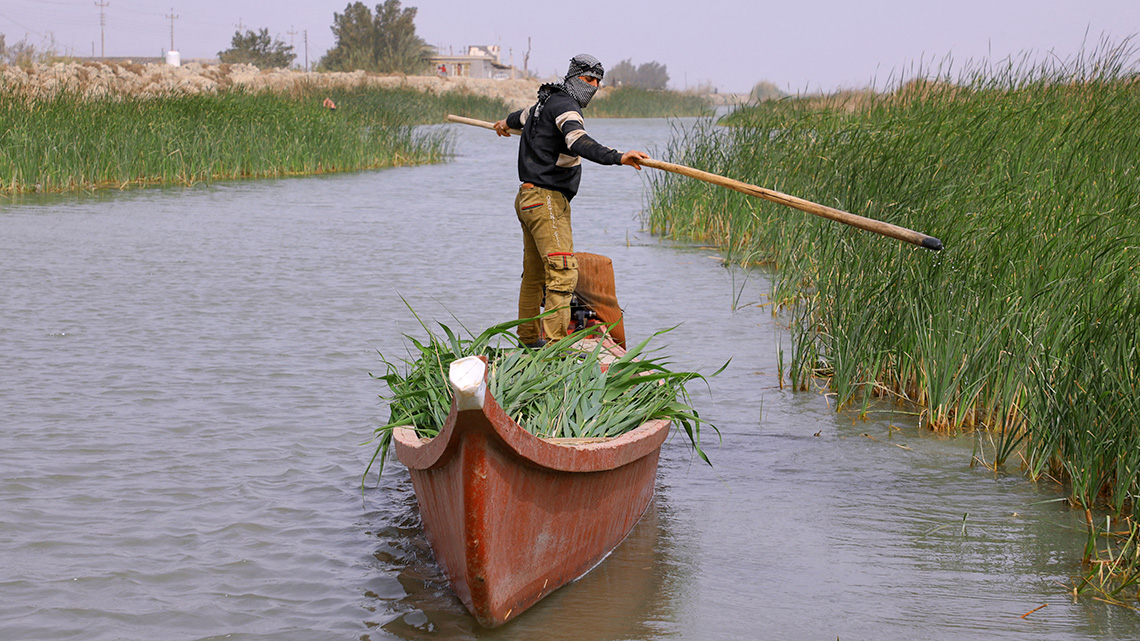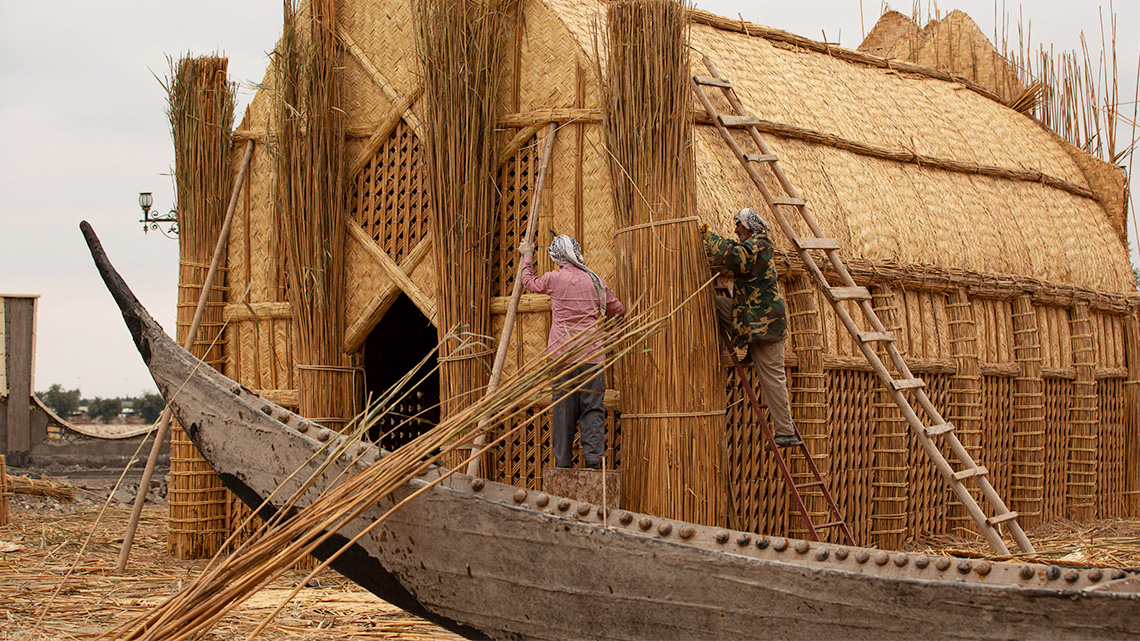Minds On
Three Sisters

The Three Sisters are corn, beans, and squash.
Plants are important to all living things, and one of the main reasons is that we can grow them for food! Growing food is an important activity that is essential to our survival, and many cultural communities around the world have harvesting practices that honour the many roles that a plant can play.
In Canada, Indigenous Peoples have grown various staple foods, such as corn, beans and squash. This special combination of vegetables is known as the Three Sisters. When the Three Sisters are planted very close to each other, they are able to grow strong and stable, and even depend on each other for support.
Check out this video entitled “Hope” to learn more about growing the Three Sisters.
In this video, let’s explore with Hope as she shares her knowledge about the Three Sisters. Hope is from Wikwemkoong Unceded Territory, an Ojibwe First Nations community on Manitoulin Island.
In the previous video clip, Hope described some of the traditional methods for growing these important plants, and the unique ways that they help each other out.
For each Three Sisters plant, select the corresponding description.
Student Success
Think!
If possible, with a partner, describe some of the “jobs” that the Three Sisters plants have, besides simply growing food for humans and animals to eat.
Record your ideas in a notebook or another method of your choice.
Press ‘Let’s Check!’ to access a hint to guide your thinking.
The plants have natural ways to support each other.
For example, the stalk can help support the plant like a pole, and the leaves provide shade to the soil to prevent it from drying.
Note to teachers: See your teacher guide for collaboration tools, ideas and suggestions.
Action
The importance of plants
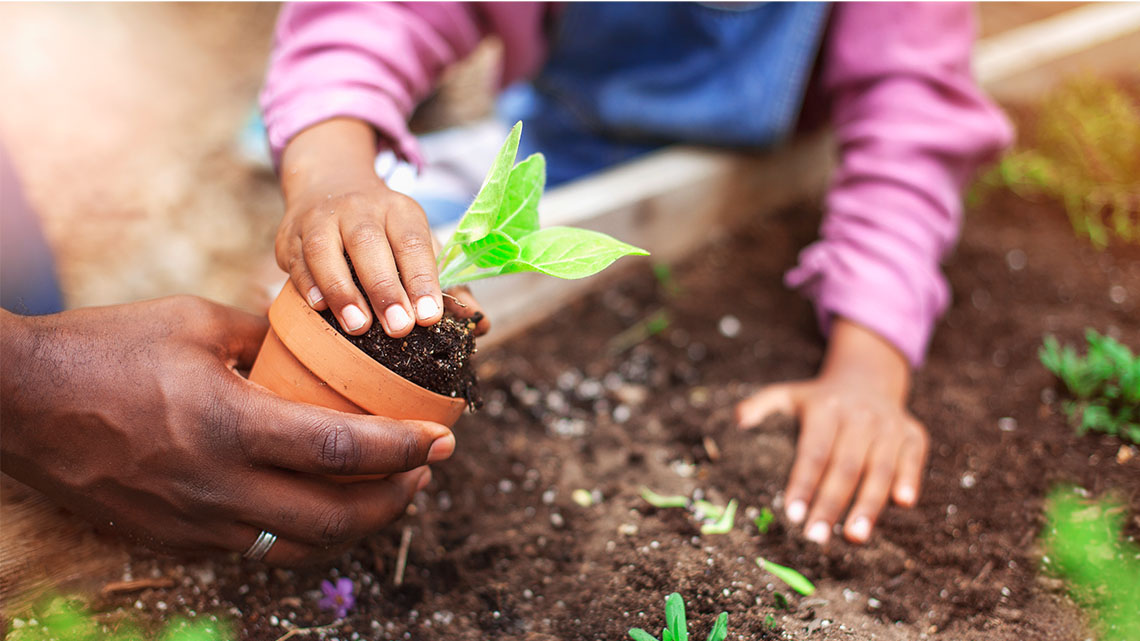
Living things – both humans and animals – depend on food from plants for survival.
But for many edible plants, the ability to produce food is not its only important talent!
Press ‘Let’s Check!’ to access a definition.
Edible describes something that is safe and suitable to be eaten.
For instance, trees and shrubs may grow edible fruits and berries.
Even though some plants may not seem “edible” to humans, they are crucial to the diets of many insects and animals!
There are several other roles that plants can play in addition to producing food. Many communities around the world benefit from these different uses in many ways.
Shelter and clothing
Two other important ways that plants can be used are for shelter, clothing, and personal accessories.
Explore the following examples of food-producing plants that are used for these other purposes.
Did You Know?
Did you know?

Corn husk containers
As we previously learned from Hope, in the Minds On section, corns, beans, and squash are important to many Indigenous communities, especially the Haudenosaunee.
Corn, in particular, is used in soups and stews and could be dried and turned into corn meal and corn flour. The husks are used to make baskets, moccasins, mats, and cornhusk dolls for children. The cobs are also used as lids to storage containers and tough scrubbing tools.
Learning check!
Select the correct answer, then press “Check Answer” to see how you did.
Plants for medicine

Anishinaabe medicine wheel
Anishinaabe medicine wheel split into four quarters. The top quarter is white and the text says, “North (Cedar).” The right quarter is yellow and the text says, “East (Tobacco).” The bottom quarter is red and the text says, “South (Sweetgrass).” The final quarter on the left is black and the text says, “West (Sage).”
Indigenous communities use diverse plants as medicines. Some of these plants are considered sacred and culturally significant, and they are used in everyday life and in ceremonies.
For example, the Anishinaabe medicine wheel includes four sacred plants: cedar, tobacco, sweetgrass, and sage. These four medicines can be used in many ways, like in teas, salves, burned in a smudge, etc.
Explore the four medicines and their uses in Anishinaabe traditions with the following flashcards.
Press the flip button to access both sides of the cards. Use the arrow keys to navigate between cards.
Did You Know?
Did you know?
Plants are not just medicine to Indigenous peoples. They also have been a form of food as long as can be remembered. In the Thanksgiving Address, the Haudenosaunee give thanks to the grasses, the plant medicines, the fruits, and their food–corn, beans, and squash. Today, many communities are working to restore their traditional food and food systems to reconnect with their traditional teachings and diets.
Protecting plant species
Plants are incredibly important to communities and cultures around the world for their many purposes and benefits.
You may have also noticed how humans, plants, and animals depend on each other, and benefit from a healthy habitat.
Press ‘Let’s Check!’ to access a definition.
A habitat is a place where a plant or animal lives that provides it with the necessary food, water, shelter, and space it needs to survive.
Sustainable harvesting
In many cultures around the world that continue traditional harvesting practices, the farming methods can often be less wasteful and harmful to the habitat. For this reason, traditional farming methods are an important part of sustainability.
Sustainability is making efforts to ensure there are enough resources (water, plants, animals, etc.) in the natural environment to last for a very long time.
Farming communities in Southern Iraq, where the natural habitat is marshland, have been working with the United Nations to support their traditional harvesting practices.
Travelling by canoe, these farmers harvest the reeds that grow along the shores of the rivers around their community. The reeds are used to feed herds of cows and buffalo, and to construct the Indigenous people’s seasonal houses.
Protecting habitats
We have already explored a few examples of how humans can grow plants for food and other purposes in responsible, sustainable ways.
Press the following tabs to access sustainable harvesting methods.
In the Raven’s Quest video clip explored in the Minds On section, Hope explained how learning the traditions for harvesting the Three Sisters (corn, beans, and squash) helped her to understand its importance.
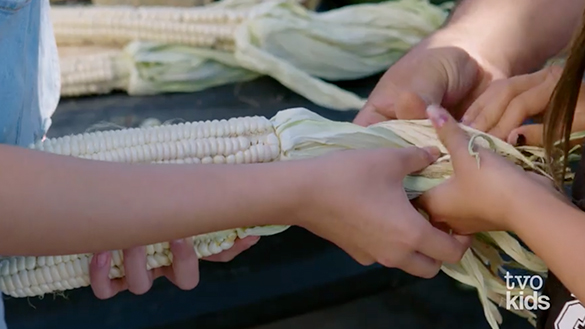
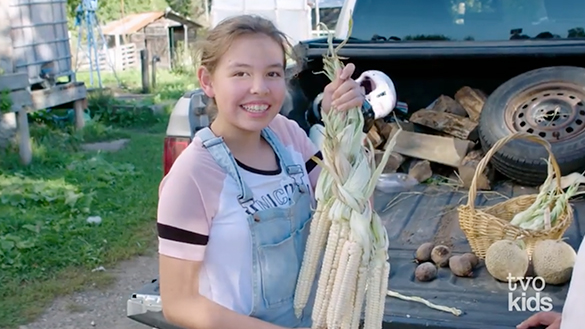
Her father showed her cultural methods for handling the plants, such as braiding the corn husk, as a way to honour and respect the plant for what it offers. It is through respect for the plant and its habitat that the native species can help be protected.
We should disrupt the physical habitat as little as possible!
In the example of the reed farmers in Southern Iraq, the harvesting is done while travelling in a canoe. Unlike large boats with motors, canoes cross water in a light and delicate way that avoids major disruption to the environment.
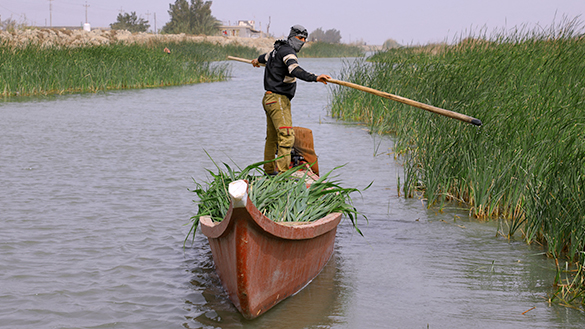
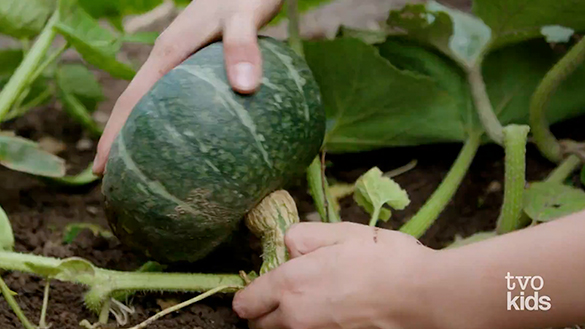
In the Three Sisters harvesting method, Hope and her friends gently remove the edible plants by hand when they are ripe and ready.
We can also work with an environmental protection organization in our communities!
In some cases, more endangered habitats are best protected when communities get support from sustainability experts, such as environmental protection groups. In the case of the Iraqi reed farmers, the community received a special partnership with the United Nations’ Food and Agricultural Organization (FAO) due to the damage caused by drought.
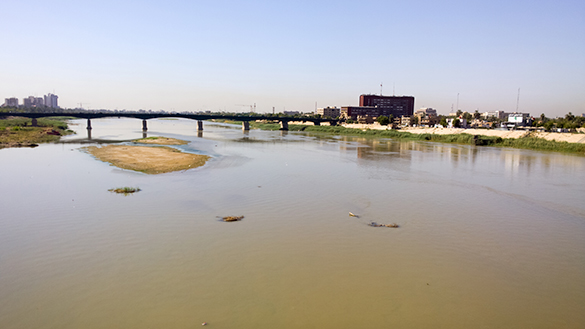
United Nations and zero hunger
Just as much as humans and animals depend on plants for food, shelter, medicine, and more – plants equally rely on humans to take action to protect and preserve their habitats.
The United Nations is guiding the global sustainability effort to help improve life on earth by the year 2030, which is linked to the protection of the plants that provide us with food.
Connecting to the world
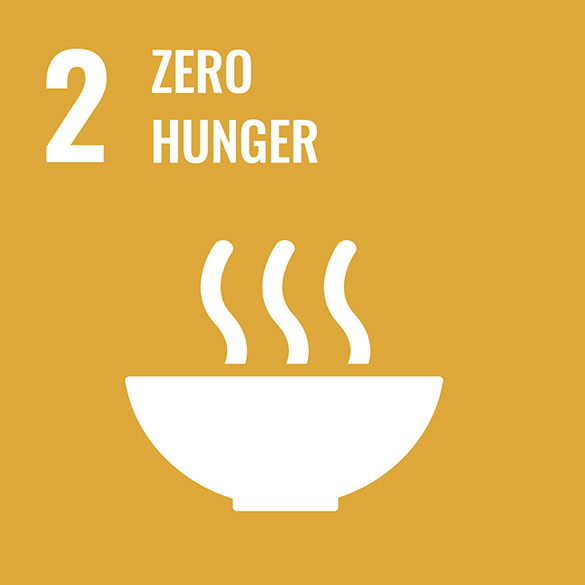
The United Nations (UN) is a group of many countries from around the world that have come together to create a better future for people and the environment. They have created 17 goals called the Sustainable Development Goals.
This learning activity is connected to Goal #2 which is called Zero Hunger. This means that everyone should have access to safe and nutritious food. Nutritious food helps someone grow and gives them energy.
Using plants for food is one way that people all over the world can help each other access safe and nutritious food.
Pause and Reflect
Pause and reflect
Let’s reflect on the connections between sustainability and the many uses of plants.
Consider the following questions to guide your thinking:
- How do living things like humans and animals rely on plants?
- How do plants rely on humans?
- How might harvesting plants in traditional methods help to reach the UN Goal of Zero Hunger?
Record your thoughts in a notebook or another method of your choice.
If possible, share your reflection with a partner or teacher.
Consolidation
Show what you know!
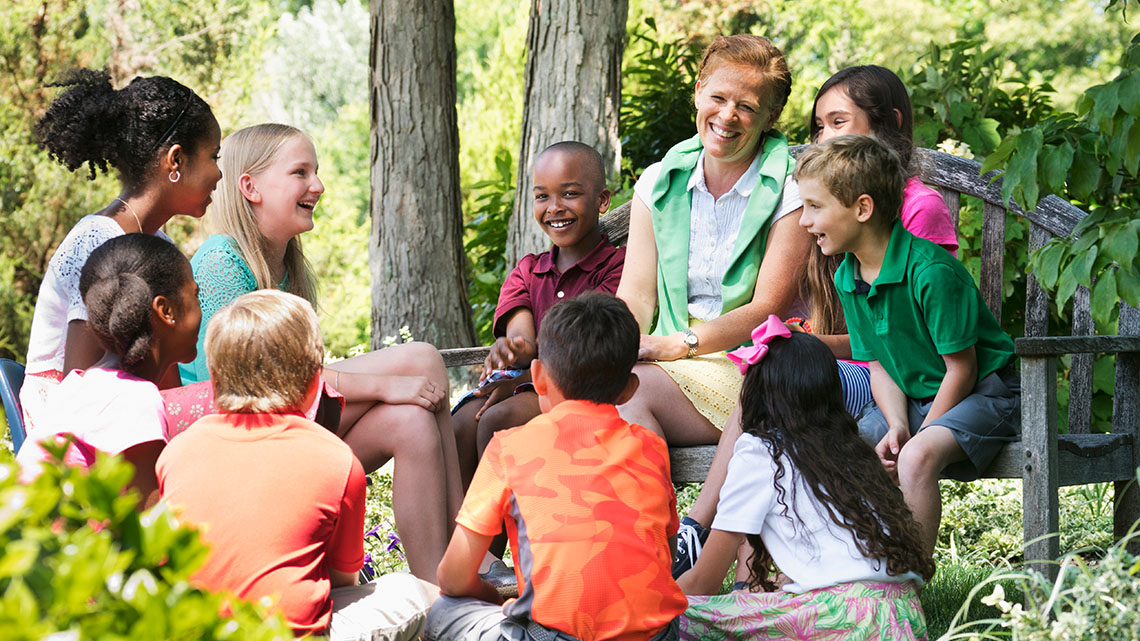
Plants are important to us for so many reasons, and it is important that we protect them.
Imagine that you are discussing the importance of a specific plant with someone who has no knowledge about it at all. Based on the plants that we explored in this learning activity, you will have a lot to discuss!

- Choose a plant explored throughout the learning activity (wood, corn, coconut, squash, beans, or reeds), or another plant species of your choice.
- Explain why your chosen plant is important.
Be sure to give examples of the different ways that this plant species can be used! (Hint: Can it be turned into fabric? Could it be used as food, as well as a house? - Describe some of the ways that a farmer could help protect the plant habitat.
Or, if you don’t know exactly how this plant is harvested, consider the general ways that farmers can be more careful and sustainable in their harvesting practices!
Record your ideas in a notebook or another method of your choice. You may also choose to present your learning as a diagram, presentation, written reflection, etc.
Reflection
How do you feel about what you have learned in this activity? Which of the next four sentences best matches how you are feeling about your learning? Press the button that is beside this sentence.
I feel…
Now, record your ideas about your feelings using a voice recorder, speech-to-text, or writing tool.



